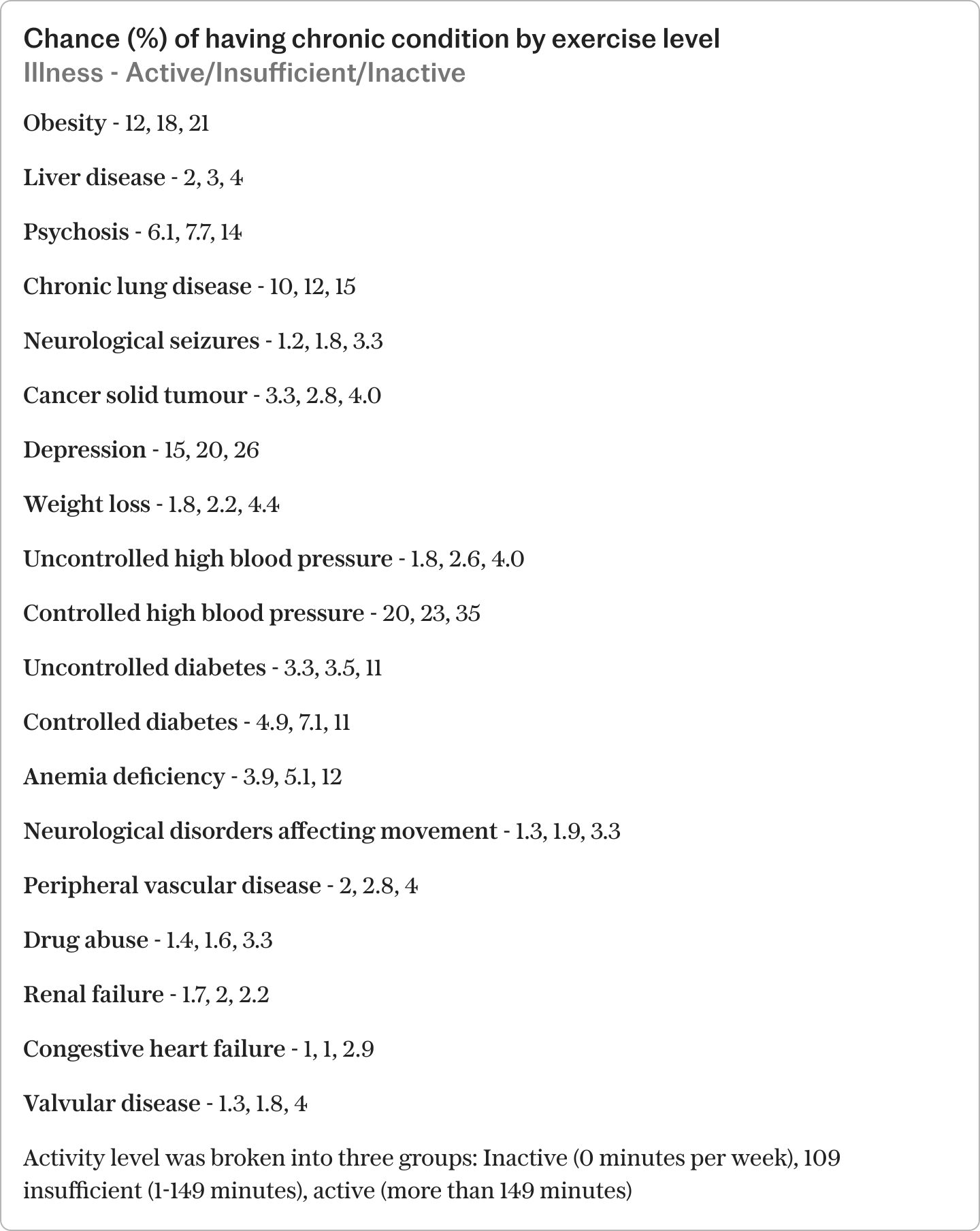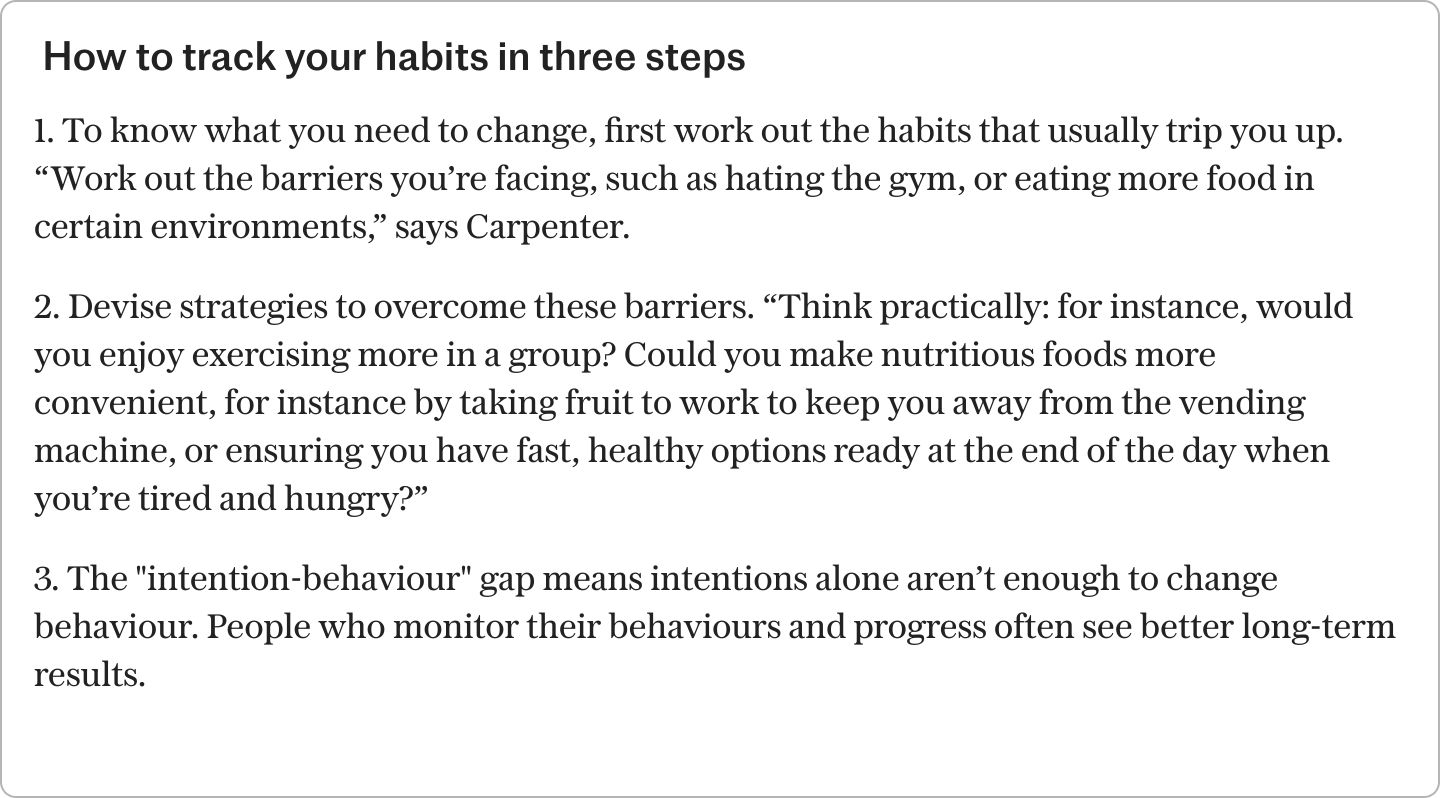
The benefits of exercise are well known. But now researchers have found that just 22 minutes of daily activity that raises the heart rate can stave off 19 chronic diseases and conditions.
should factor in how much regular exercise a person gets because it plays such a large role in current and future health.
A study of 7,000 people found hitting the recommended 150 minutes a week of moderate to vigorous exercise – which includes activities such as brisk walking, jogging, swimming or playing tennis – was protective against a string of conditions.
high blood pressure, depression, lung disease, diabetes and neurological disorders affecting movement such as Parkinson’s or Huntingdon’s.
Dr Lucas Carr, an associate professor in the department of health at the University of Iowa, who led the research, said: “Of the patients who were screened for inactivity, active patients had significantly healthier cardiometabolic profiles and lower risk of up to 19 inactivity-related comorbid conditions compared to inactive and insufficiently active patients.
“Limiting inactivity screenings to select clinical populations or specific clinical visits limits opportunities for early intervention and/or prevention of inactivity-related diseases.
“For patients, many of whom report insufficient activity, we need options to easily connect them with supportive services like exercise prescriptions and/or community health specialists.”

in Britain and is estimated to cost the UK £7.4 billion annually.
each week, 75 minutes of vigorous activity, or a mixture of both.
Yet about one in five (34 per cent) of men and one in two (42 per cent) women are not active enough for good health.
Doctors can now prescribe exercise
Although doctors can prescribe exercise under the NHS exercise referral scheme, it tends to be for limited conditions, such as depression, obesity or diabetes and only lasts for three to four months.
In the new study, researchers examined responses from activity questionnaires filled out by more than 7,000 patients with an average age of around 41, who attended the University of Iowa health care centre.
Activity level was broken into three groups: Inactive (0 minutes per week), 109 insufficient (1-149 minutes), active (more than 149 minutes).
The team found that people who exercised the most had on average just 1.17 chronic conditions compared to 2.16 for those who exercised the least.

There was also a clear relationship between the amount of exercise and the chance of having a chronic condition. For example, about 21 per cent of the inactive participants were obese compared to just 12 per cent of the most active.
Likewise, the chance of diabetes was more than three times higher in the non-exercisers, while depression was nearly halved.
The researchers also compared results from patients who completed the surveys with more than 33,000 patients who were not offered the survey in other areas of the hospital.
The researchers found patients who took the survey were younger and in better health than the patient population who were not given the questionnaire, based on analysing all patients’ electronic medical records.
It suggests that the study was carried out on the “worried well” and the risk of disease through inactivity could be worse for the general population.
“We believe this finding is a result of those patients who take the time to come in for annual wellness exams who also are taking more time to engage in healthy behaviours, such as being physically active,” added Dr Carr.
The study was published in the Journal of Physical Activity and Health this month.


Post a Comment
0Comments